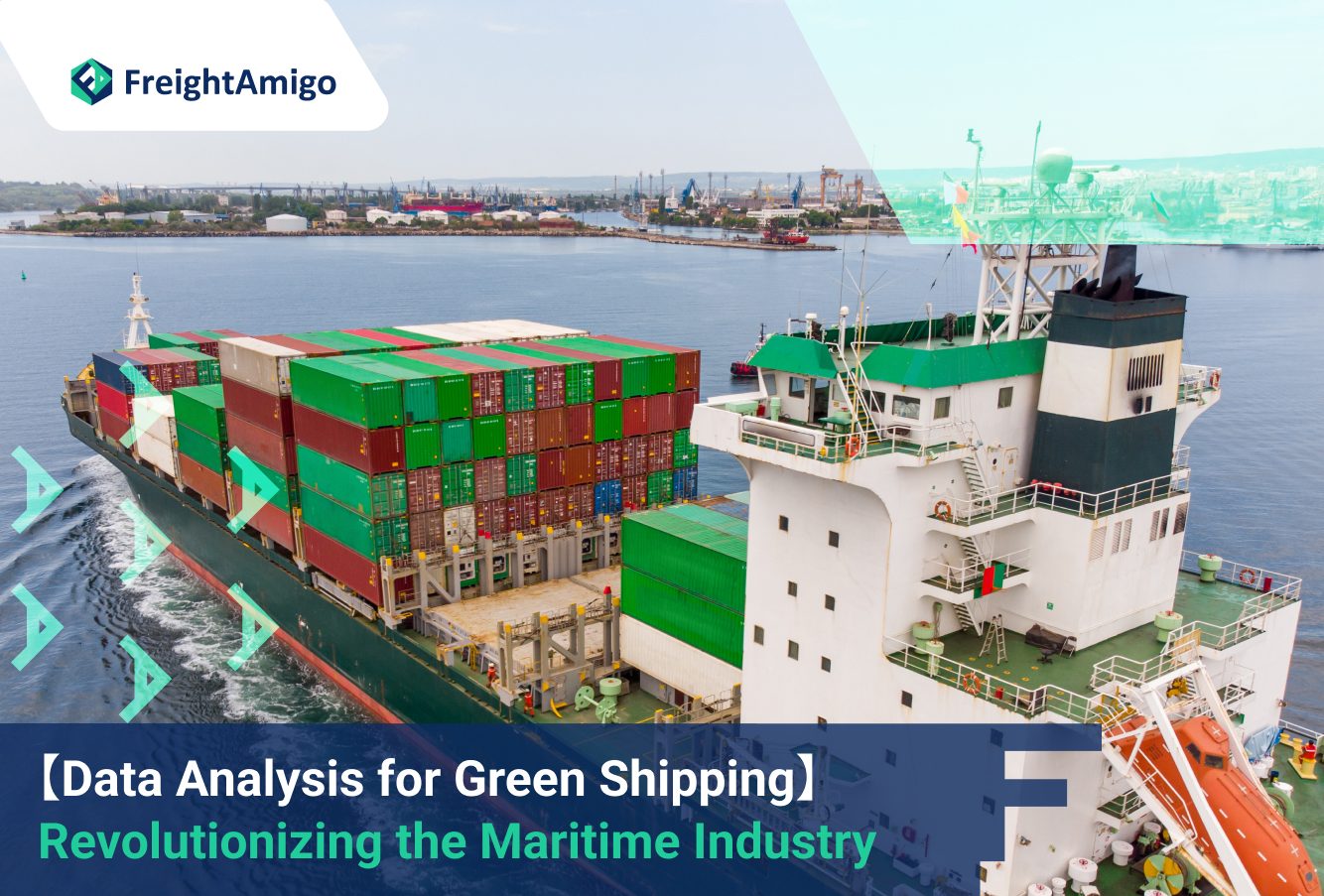The maritime industry plays a pivotal role in global trade, accounting for over 80% of the world’s goods transportation. However, with concerns about environmental sustainability on the rise, the industry is under pressure to reduce its carbon footprint. Enter green shipping, a concept that combines innovative technologies and data analysis to revolutionize the way ships operate. In this article, we will explore how data analysis is transforming the maritime industry towards a greener future.
Latest update on 29 February, 2024 by Caspian Ng– Marketing Analyst at FreightAmigo
Want to compare the best Express, Air Freight, Sea Freight, Rail Freight & Trucking rates so as to have better control on cost?
Understanding Green Shipping
Green shipping encompasses a range of practices aimed at minimizing the environmental impact of maritime activities. From reducing greenhouse gas emissions to optimizing fuel consumption, the goal is to achieve sustainability without compromising operational efficiency. Data analysis, coupled with advanced technologies, is the driving force behind these transformative changes.
Benefits of Green Shipping
- Environmental Sustainability: Green shipping initiatives contribute to the preservation of marine ecosystems and mitigate climate change by reducing carbon emissions.
- Cost Savings: Energy-efficient operations and optimized fuel consumption lead to substantial cost savings for shipping companies.
- Regulatory Compliance: With increasingly stringent environmental regulations, adopting green shipping practices ensures compliance and avoids penalties.
- Enhanced Reputation: Implementing sustainable practices enhances a company’s reputation and attracts environmentally conscious customers and investors.
Leveraging Data Analysis in Green Shipping
Data analysis plays a crucial role in enabling green shipping practices. By harnessing the power of big data, shipping companies can make informed decisions, optimize operations, and reduce their environmental impact.
Data Collection and Integration
To leverage data analysis effectively, shipping companies need to collect and integrate data from various sources. This includes vessel sensors, weather data, traffic patterns, and fuel consumption records. By centralizing this data, companies gain valuable insights into their operations and identify areas for improvement.
Predictive Analytics for Optimal Routing
One of the key applications of data analysis in green shipping is predictive analytics for optimal routing. By analyzing historical data and considering factors such as weather conditions, ocean currents, and traffic congestion, shipping companies can determine the most fuel-efficient and environmentally friendly routes. This not only reduces emissions but also lowers costs by minimizing fuel consumption.
Real-time Monitoring and Maintenance
Data analysis enables real-time monitoring of vessel performance and condition. By using sensors and IoT devices, shipping companies can collect data on engine efficiency, emissions, fuel levels, and maintenance requirements. This allows for proactive maintenance and troubleshooting, ensuring optimal performance and reducing the risk of breakdowns.
Energy Efficiency Optimization
Data analysis helps shipping companies identify opportunities for energy efficiency optimization. By analyzing data on vessel speed, sea conditions, and cargo capacity, companies can optimize fuel consumption and reduce emissions. Additionally, data analysis can identify patterns and trends that highlight areas for further improvement, such as hull design, propulsion systems, and alternative fuels.
Case Studies in Green Shipping
Several companies have already embraced data analysis to drive green shipping practices. Let’s explore a few inspiring case studies:
Case Study 1: Maersk Line
Maersk Line, one of the world’s largest container shipping companies, has leveraged data analysis to reduce fuel consumption and emissions. By analyzing data from vessel sensors and weather forecasts, Maersk Line optimizes its routes, resulting in significant fuel savings and carbon footprint reduction.
Case Study 2: Kongsberg Maritime
Kongsberg Maritime, a leading provider of maritime technology solutions, utilizes data analysis to optimize vessel performance and reduce emissions. Their systems collect and analyze data on engine parameters, weather conditions, and fuel consumption, enabling real-time monitoring and predictive maintenance.
Case Study 3: Wärtsilä
Wärtsilä, a global leader in smart technologies for the marine and energy sectors, employs data analysis to optimize energy efficiency in shipping operations. By integrating data from various sources, including vessel sensors and weather forecasts, Wärtsilä helps shipping companies make data-driven decisions to reduce fuel consumption and emissions.
Overcoming Challenges and Future Directions
While data analysis holds immense potential for green shipping, several challenges must be addressed for widespread adoption. These challenges include data privacy and security, data standardization, and the need for skilled data analysts in the maritime industry. However, with advancements in technology and increased awareness of environmental issues, the future of data-driven green shipping looks promising.
Conclusion
Data analysis is revolutionizing the maritime industry by enabling green shipping practices. By leveraging data collection, predictive analytics, real-time monitoring, and energy efficiency optimization, shipping companies can reduce their environmental impact while enjoying cost savings and regulatory compliance. With inspiring case studies and ongoing advancements, the future of green shipping is bright. Embracing data analysis will not only benefit the shipping industry but also contribute to a greener and more sustainable planet.
Visit the FreightAmigo website to learn more about how data analytics is transforming the shipping industry into a greener future.
Read More:
Maximizing Profits | Fulfillment by Amazon Products Revolutionizing Your Business | FreightAmigo
The Art of Order Fulfillment | Strategies for Success in an E-commerce World | FreightAmigo
Maximizing Efficiency | Crucial Role of Fulfillment Services | FreightAmigo
If you have any inquiries on logistics/supply chain, feel free to contact FreightAmigo now:
Chat with us online | Hotline: +852 28121686 | WhatsApp: +852 27467829









































